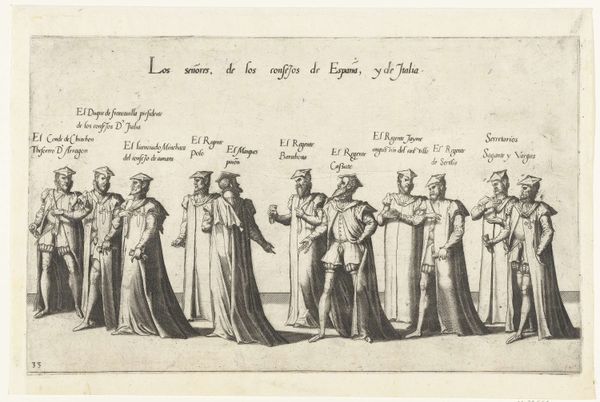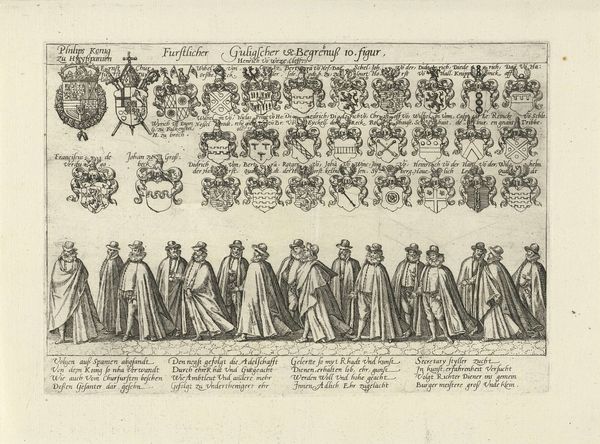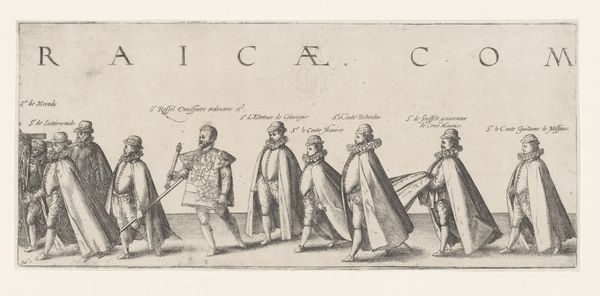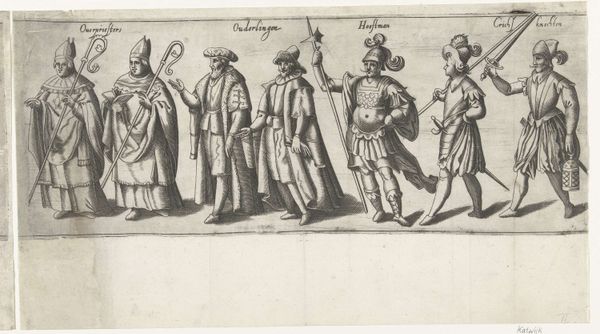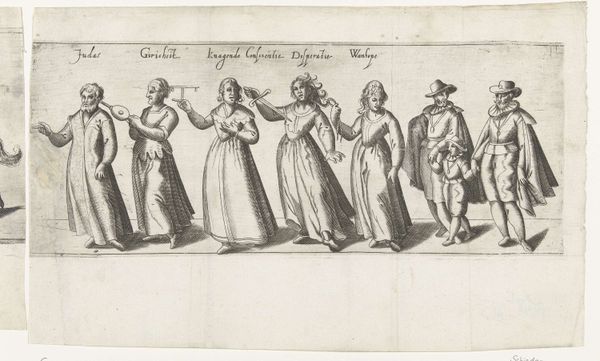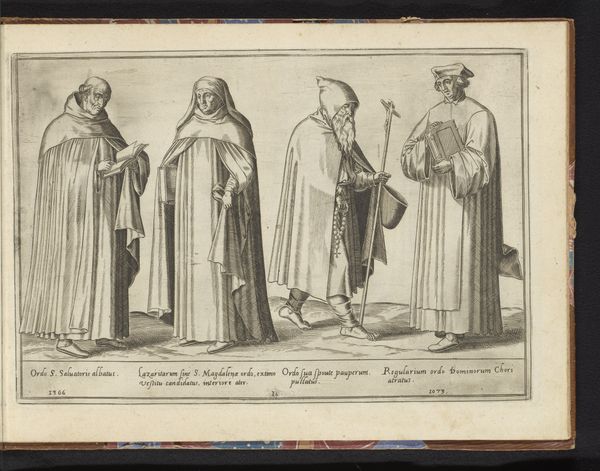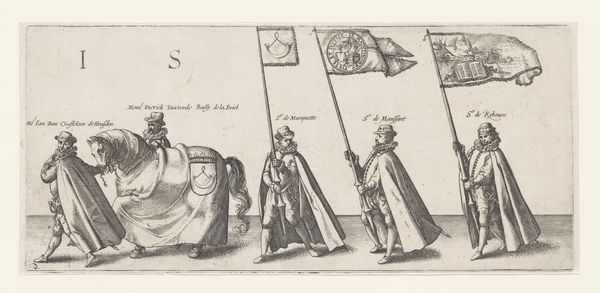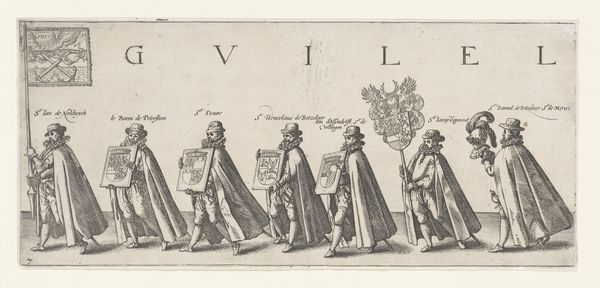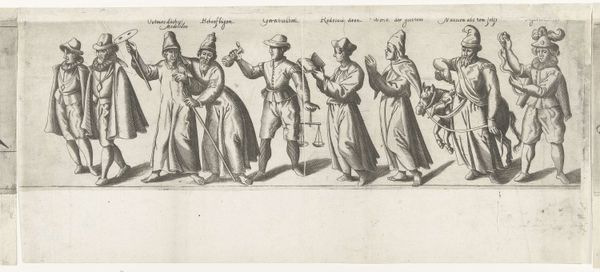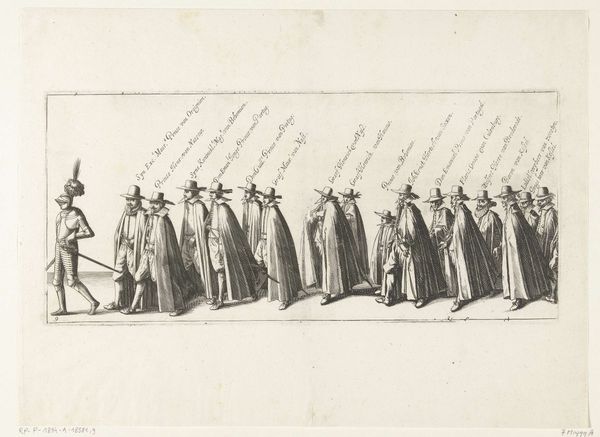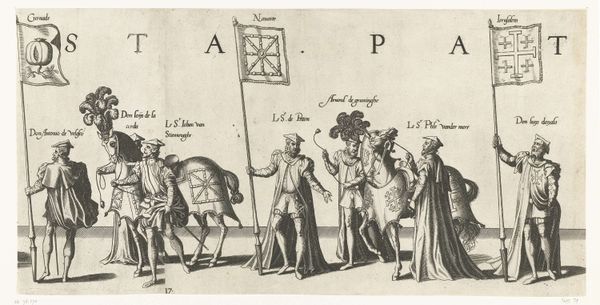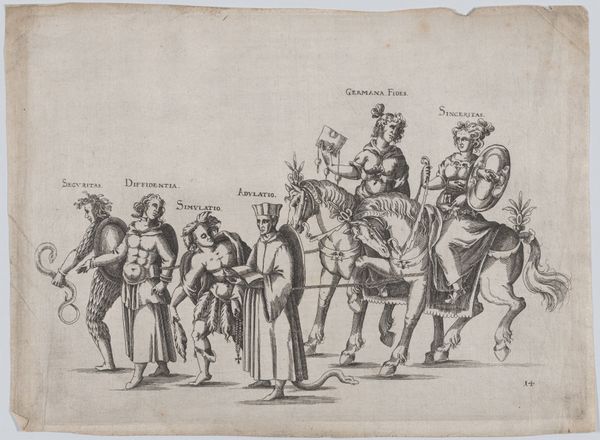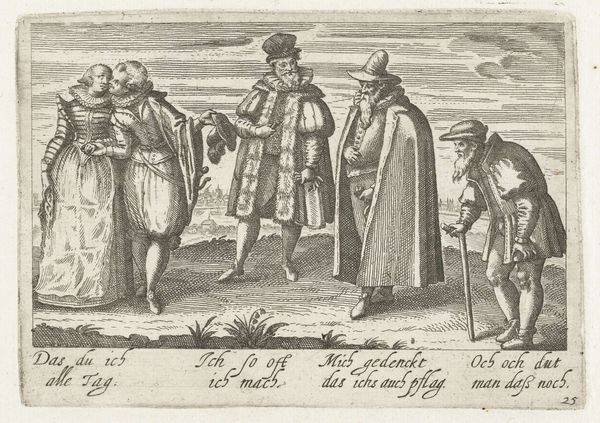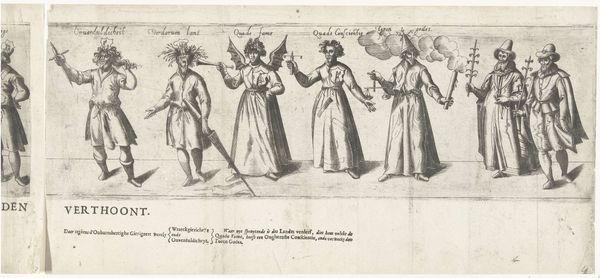
print, engraving
#
portrait
#
baroque
# print
#
old engraving style
#
history-painting
#
engraving
Dimensions: height 161 mm, width 385 mm
Copyright: Rijks Museum: Open Domain
Editor: This is "Begrafenisstoet van Willem van Oranje, blad 12" by Hendrick Goltzius, a print dating from 1584 to 1638 held at the Rijksmuseum. It depicts a somber procession of figures, and the style reminds me a little of courtroom sketches I've seen in history books. I’m curious, how would you interpret this work within its historical context? Curator: This print offers a glimpse into the public mourning and political theater surrounding William of Orange's assassination. Goltzius masterfully uses the print medium to disseminate imagery that constructs and reinforces Orange's legacy. Note how the figures are depicted: do they appear unified, or do you see subtle markers of rank or status? Editor: I see a degree of uniformity in their dress, although some figures appear to hold ceremonial objects and there's a hierarchy in where they are placed in the parade. So is Goltzius both documenting and shaping public memory here? Curator: Precisely. He’s constructing a narrative. Consider who these figures are meant to represent: powerful dignitaries whose presence legitimizes the Dutch revolt against Spanish rule. Goltzius strategically employs printmaking’s reproducibility to solidify William of Orange as a symbol of Dutch independence. Editor: So the print isn't just about grief, it's also a tool of political consolidation? The museum is full of this stuff! Curator: Exactly. Works such as these give us vital evidence about how images were utilized to advance various socio-political aims, impacting how individuals perceived themselves and their world. It also highlights the importance of images as social documents. Editor: Thanks, that sheds new light on how art serves a very public purpose beyond just aesthetic expression! Curator: And looking closely reveals the nuances of political image-making of the past. Always more to uncover in museums than is immediately visible!
Comments
No comments
Be the first to comment and join the conversation on the ultimate creative platform.
